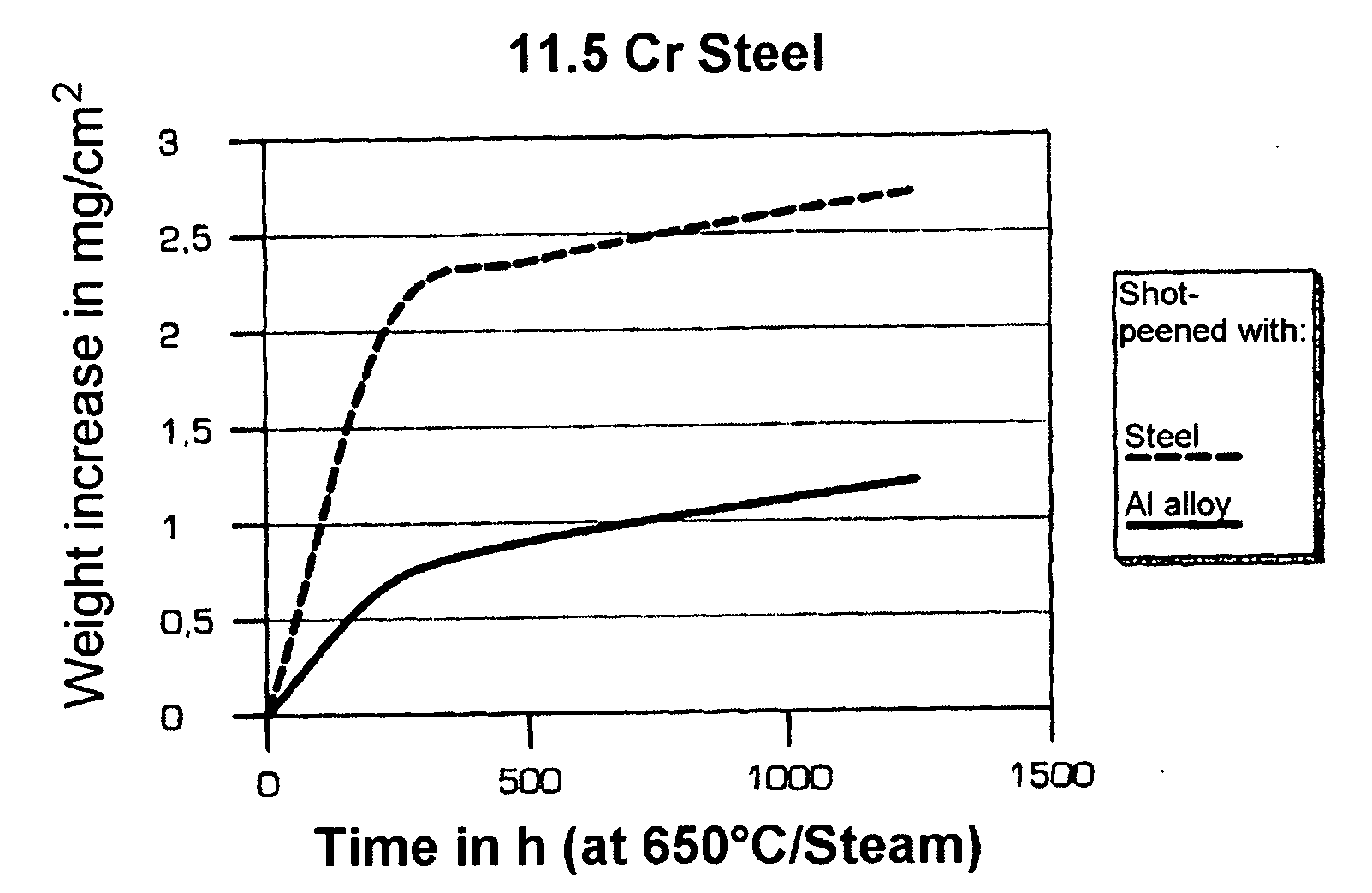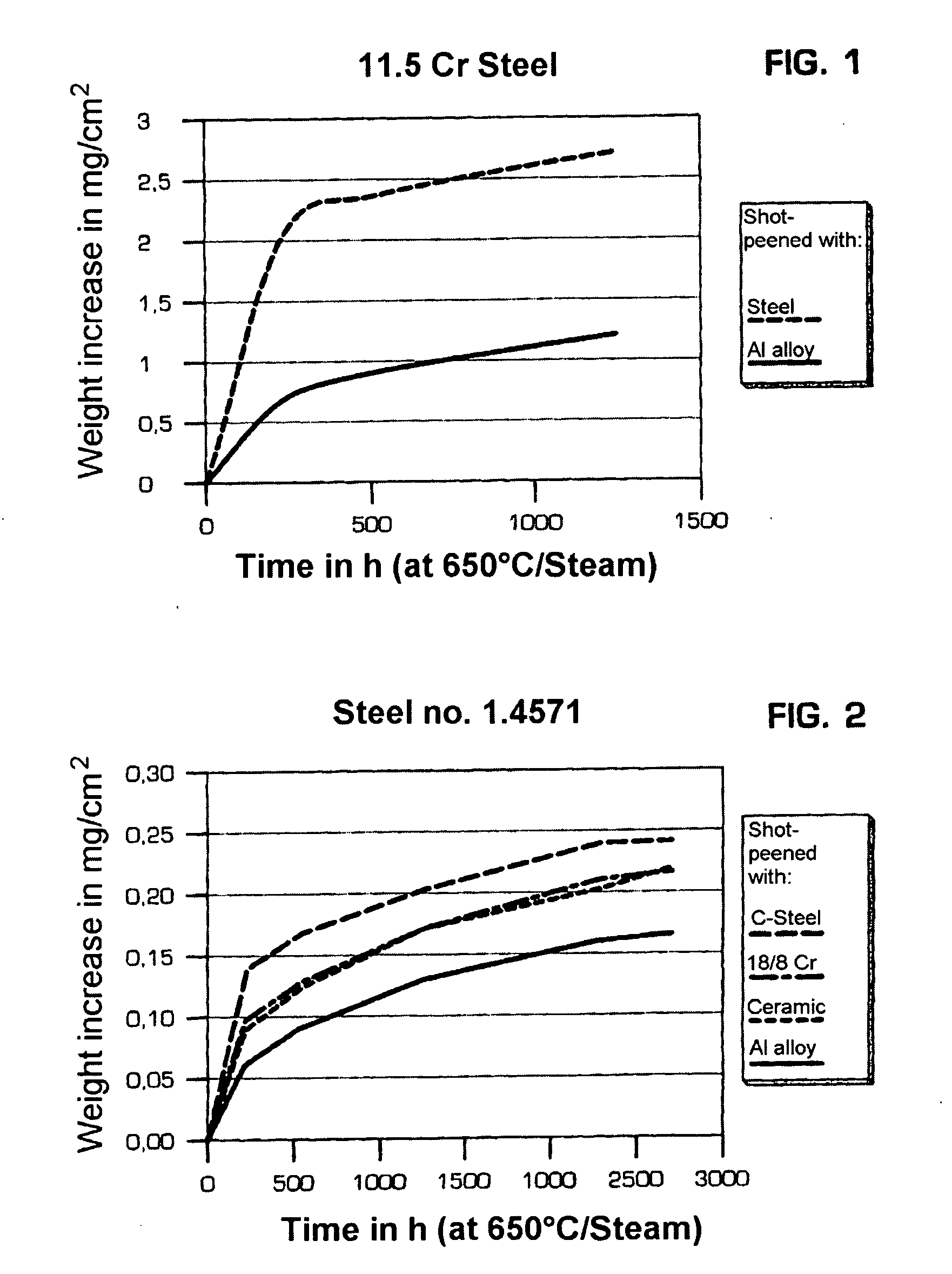Method for the surface treatment of cr steels
a surface treatment and cr steel technology, applied in the field of material technology, can solve the problems of inability to guarantee the surface treatment effect, need for heat treatment or even several heat treatments, and disadvantages of coatings, so as to improve the oxidation resistance and solid particle erosion resistance, reduce the weight increase, and improve the effect of oxidation resistan
- Summary
- Abstract
- Description
- Claims
- Application Information
AI Technical Summary
Benefits of technology
Problems solved by technology
Method used
Image
Examples
Embodiment Construction
[0019]The invention is explained in more detail below with reference to an exemplary embodiment and to FIG. 1 to 2.
[0020]A ferritic Cr steel with the following chemical composition (values in % by weight):
[0021]0.2 C
[0022]0.5 Mn
[0023]0.28 Si
[0024]11.6 Cr
[0025]0.8 Mo
[0026]0.7 Ni
[0027]0.27 V
[0028]The rest iron and unavoidable impurities was treated according to an exemplary embodiment of the invention. In this case, in this exemplary embodiment, the abovementioned steel was shot-peened with particles formed of an aluminum alloy (grain size: 200-400 μm). The Al alloy had a hardness of 90 to 120 HV 0.2 and had the following chemical composition:[0029]5.5 to 7% Cu[0030][0031]>1.6% Si[0032]≦1.5% Zn[0033]≦0.15 Ti[0034]≦0.2 Ni[0035]≦0.3 Mn[0036]≦0.15 Pb[0037]≦0.1 Sn.
[0038]The surface of the steel was shot-peened for five minutes with these particles, the pressure amounting to approximately 6 bar and the nozzle having an angle of 80-85° to the surface.
[0039]It is advantageous that a subseque...
PUM
| Property | Measurement | Unit |
|---|---|---|
| roughness | aaaaa | aaaaa |
| roughness | aaaaa | aaaaa |
| temperatures | aaaaa | aaaaa |
Abstract
Description
Claims
Application Information
 Login to View More
Login to View More - R&D
- Intellectual Property
- Life Sciences
- Materials
- Tech Scout
- Unparalleled Data Quality
- Higher Quality Content
- 60% Fewer Hallucinations
Browse by: Latest US Patents, China's latest patents, Technical Efficacy Thesaurus, Application Domain, Technology Topic, Popular Technical Reports.
© 2025 PatSnap. All rights reserved.Legal|Privacy policy|Modern Slavery Act Transparency Statement|Sitemap|About US| Contact US: help@patsnap.com


